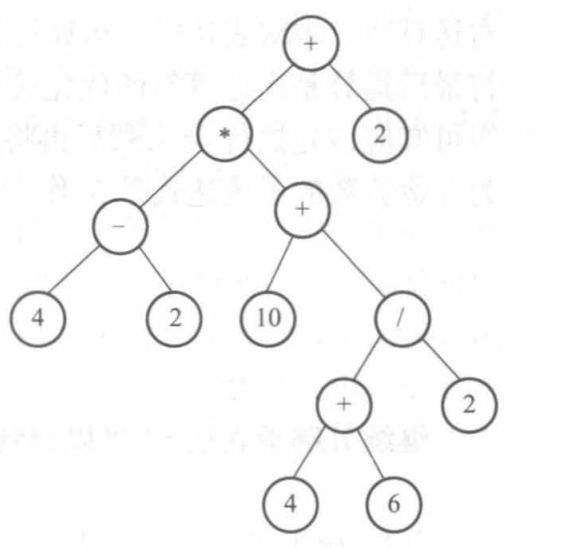Before:全世界都在偶遇她,只有我没机会嘛😥
Data Structure 11 二叉链表遍历的非递归实现及二叉树的应用
二叉链表遍历的非递归实现
上一节翁阿姨的课上,我们讲到了通过栈对函数实现非递归调用,而今天所说的二叉链表遍历的非递归实现,同样也是依靠链接栈这一数据结构实现的。实现时需要注意进栈顺序的细节,下面给出代码实现。
1
2
3
4
5
6
7
8
9
10
11
12
13
14
15
16
| template <class T>
void binaryTree<T>::preOrder() const{
linkStack<Node *> s;
s.push(root);
while(!s.isEmpty()){
Node *tmp = s.pop();
cout << tmp -> data;
if(tmp -> left != nullptr){
s.push(tmp -> left);
}
if(tmp -> right != nullptr){
s.push(tmp -> right);
}
}
}
|
而中序遍历在实现时则有一些不同,因为中序遍历要求先访问左子树,再访问根结点,最后访问右子树,所以在根结点出栈后不能先访问它,而将其暂存,先访问左子树,再访问它。为了解决这一问题,我们重新更换一种结点,记录结点进栈的次数。
1
2
3
4
5
6
7
8
| struct StNode{
Node *node
int timePop
StNode(Node *n = nullptr){
node = n
timePop = 0
}
}
|
1
2
3
4
5
6
7
8
9
10
11
12
13
14
15
16
17
18
19
20
21
22
23
| template <class T>
void binaryTree<T>::midOrder() const{
linkStack<StNode> s
StNode current(root)
while(!s.isEmpty()){
current = s.pop()
++ current.timePop
if(current.timePop == 2){
// 出栈2次了
cout << current.node -> data << endl
if(current.node -> right != nullptr){
current.push(StNode n(current.node -> right))
}
}else{
// 重新被推回栈中
s.push(current)
if(current.node -> left != nullptr){
current.push(StNode n(current.node -> left))
}
}
}
}
|
最后是后序遍历,与中序遍历实现方法类似,但只有在第三次出栈时才会被访问
1
2
3
4
5
6
7
8
9
10
11
12
13
14
15
16
17
18
19
20
21
22
23
24
| template <class T>
void binaryTree<T>::postOrder() const{
linkStack<StNode> s
StNode current(root)
while(!s.isEmpty()){
current = s.pop()
++ current.timePop
if(current.timePop == 3){
cout << current.node -> data << endl
}else if(current.timePop == 2){
s.push(current)
if(current.node -> right != nullptr){
s.push(StNode n(current.node -> right))
}
}else if(current.timePop == 1){
s.push(current)
if(current.node -> left != nullptr){
s.push(StNode n(current.node -> left))
}
}
}
}
|
二叉树的应用——计算表达式
由于算术运算符是二元运算符,故可以很自然地表示成一棵二叉树,根结点表示运算符,左右孩子是运算数,这棵树被称为表达式树,既然如此,我们知道对这棵树的遍历是后序遍历
下面就是一棵表达式树:

所描述的表达式为:**(4 - 2)(10 + (4 + 6)/2) + 2*
这个逻辑构造似乎还是比较好理解的,所以,我们就直接来看看如何建树吧。
1
2
3
4
5
6
7
8
9
10
11
12
13
14
15
16
17
18
19
20
21
22
23
24
25
26
27
28
29
30
31
32
33
34
| class calc{
enum Type{DATA,ADD,SUB,MULTI,DIV,OPAREN,CPAREN,EOL};
struct node{
Type type;
int data;
node *lchild,rchild;
node(Type t,int d = 0,node *lc = nullptr,node *rc = nullptr){
type = t;
data = d;
lchild = lc;
rchild = rc;
}
};
node *root;
node *create(char *&s); //创建一棵表达式树
Type getToken(char *&s,int &value); // 获得一个切片
int result(node *t); //计算表达式结果
public:
calc(char *s){
root = create(s);
}
int result(){
if(root == nullptr){
return 0;
}
return result(root);
}
};
|
create函数的实现
1
2
3
4
5
6
7
8
9
10
11
12
13
14
15
16
17
18
19
20
21
22
23
24
25
26
27
28
29
30
31
32
33
34
35
36
37
38
39
40
41
42
43
44
45
| calc::node *calc::create(char *&s){
calc::node *p,*root = nullptr;
Type returnType;
int value;
while(*s){
returnType = calc::getToken(s,value);
switch(returnType){
case DATA:case OPAREN:
if(returnType == DATA){
node *p = new node(DATA,value);
}else{
p = create(s);
}
if(root != nullptr){
if(root -> rchild == nullptr){
root -> rchild = p;
}else{
root -> rchild -> rchild = p;
}
}
break;
case ADD: case SUB:
if(root == nullptr){
root = new node(returnType,0,p);
}else{
root = new node(returnType,0,root);
}
break;
case MULTI: case DIV:
if(root == nullptr){
root = new node(returnType,0,p);
}else if(root -> type == MULTI || root -> type == DIV){
root = new node(returnType,0,root);
}else{
root -> rchild = new node(returnType,0,root -> rchild);
}
break;
case CPAREN: caseEOL:
return root;
}
}
return root;
}
|
getToken 函数与先前在Bookstore-2024中写的TokenScanner类类似,故不描述了(好懒啊😅)
另一个比较有趣的函数——result
1
2
3
4
5
6
7
8
9
10
11
12
13
14
15
16
17
18
19
20
21
| int calc::result(calc::node *t){
int num1,num2;
if(t -> type == DATA){
return t -> data;
}
num1 = calc(t -> lchild);
num2 = calc(t -> rchild);
if(t -> type == ADD){
t -> data = num1 + num2;
return num1 + num2;
}else if(t -> type == SUB){
t -> data = num1 - num2;
return num1 - num2;
}else if(t -> type == MULTI){
t -> data = num1 * num2;
return num1 * num2;
}else if(t -> type == DIV){
t -> data = num1 / num2;
return num1 / num2;
}
}
|
Conclude
这两天一直在写二叉树,总结一下,真是对递归很巧妙的应用呢!
下面就是Huffman Tree了,离priority_queue越来越近了😝
